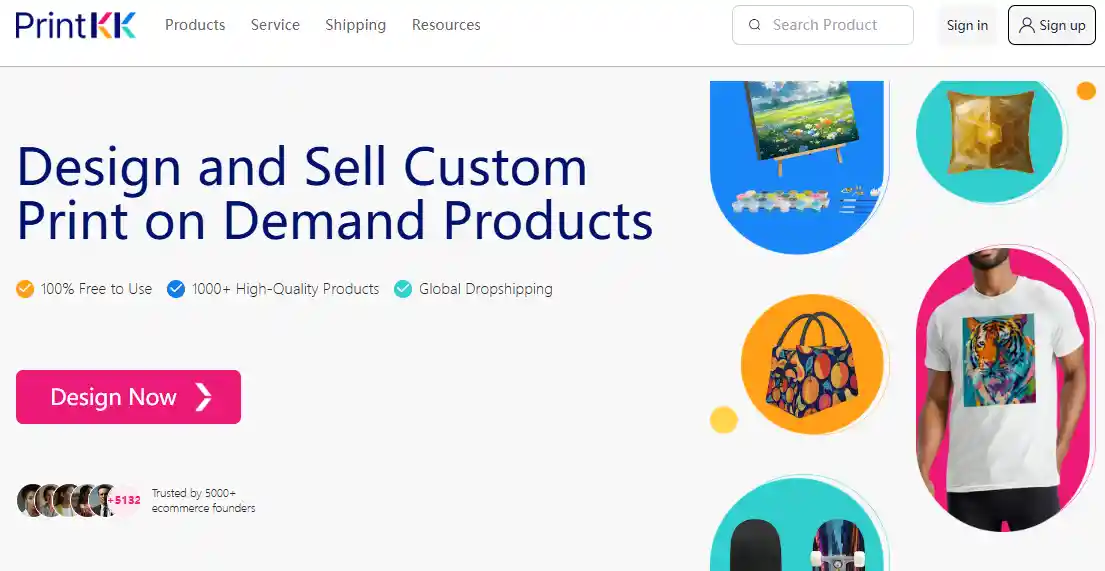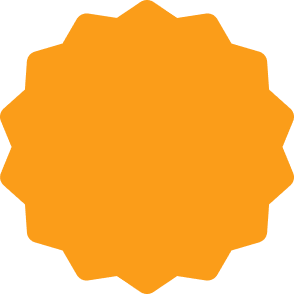
In the ever-evolving world of e-commerce, staying ahead means embracing the latest technologies that can catapult your business into new heights of success. Enter ChatGPT, the groundbreaking AI that's transforming the print on demand industry. As we step into 2025, leveraging ChatGPT's capabilities has become not just an advantage, but a necessity for those looking to outpace the competition and significantly boost their sales. This guide offers a comprehensive look into how integrating ChatGPT can revolutionize your print on demand business, from automating design processes to personalizing customer experiences. Whether you're a seasoned entrepreneur or just starting out, prepare to unlock the full potential of your online store with the power of AI.
What is ChatGPT?

In the dynamic world of print-on-demand (POD), leveraging innovative tools like ChatGPT can revolutionize how creators, from budding entrepreneurs to seasoned designers, engage with content creation. ChatGPT, a cutting-edge language model developed by OpenAI, excels in generating human-like text, offering a broad spectrum of applications in automated customer service, content generation, and beyond. Its ability to understand and produce text in various contexts makes it an invaluable asset for those looking to enhance their POD ventures with smart, scalable solutions.
How To Use ChatGPT?

Harnessing ChatGPT in the print-on-demand (POD) arena opens a realm of possibilities for innovators and creatives alike. This AI-driven tool not only streamlines content creation but also enhances customer engagement through personalized experiences. To effectively integrate ChatGPT into your POD business, a strategic approach is key.
- Automating Customer Service
- Implement ChatGPT to handle FAQs
- Customize interactions for enhanced user engagement
- Content Generation
- Utilize ChatGPT for product descriptions
- Create engaging marketing content
- Market Analysis
- Analyze trends with ChatGPT's data processing capabilities
- Tailor offerings to meet current market demands
What is Print on Demand?
Print on Demand (POD) represents a transformative approach to manufacturing and selling custom-designed merchandise. Unlike traditional bulk production, POD allows for the creation of products only after a customer has placed an order. This model significantly reduces inventory risk and upfront costs, making it an attractive option for entrepreneurs, designers, and small businesses looking to launch or expand their product lines with minimal investment.
The beauty of POD lies in its versatility and scalability. Whether you're an artist eager to share your creations with the world, a brand looking to extend your merchandise line, or a corporation seeking personalized items for events, POD offers a streamlined solution. Products ranging from apparel and accessories to home decor and stationery can be customized and produced on a per-order basis, enabling a wide array of creative opportunities for designers and a diverse product offering for businesses.
How To Use ChatGPT in Print on Demand?

In the ever-evolving landscape of print on demand (POD), the integration of artificial intelligence (AI) tools like ChatGPT has opened new avenues for creativity and market research. A standout resource in this domain is the video "ChatGPT For UNLIMITED Print on Demand Design Ideas THAT SELL," which offers invaluable insights into harnessing ChatGPT for generating compelling POD designs. This guide draws on the video's pioneering approach, combining AI's creative capabilities with strategic niche research to revolutionize POD design ideation.
Utilizing AI for Design Ideas
The video underscores ChatGPT's role in transcending traditional, keyword-based designs, advocating for a deeper dive into niche exploration. This method fosters the creation of designs that not only captivate but also sell, marking a departure from the mundane to embrace complexity and engagement.
Free Niche Research Method
Emphasizing cost-efficiency, the video introduces a free niche research method that leverages ChatGPT alongside a specific spreadsheet tool. This approach democratizes design ideation, making it accessible to all, irrespective of budget constraints.
Applicability Across POD Platforms
The versatility of this method is highlighted through its applicability across various POD platforms. From Etsy to Shopify with Printful, this strategy is designed to fit a wide array of marketplaces, ensuring broad usability and effectiveness.
Making Money Online with ChatGPT
At its core, the video champions the use of ChatGPT as a means to generate income in the POD sector. It presents a compelling case for the tool's value, even in a paid scenario, underscoring its potential to significantly impact online earnings through creative design.
This section, inspired by the innovative strategies presented in "ChatGPT For UNLIMITED Print on Demand Design Ideas THAT SELL," aims to equip entrepreneurs and creatives with the knowledge to leverage ChatGPT in their POD ventures. By integrating AI into the design process, users can unlock a wealth of unique, marketable ideas, setting the stage for success in the competitive POD marketplace.
Examples of using ChatGPT in print on demand
In the dynamic world of print on demand (POD), ChatGPT emerges as a versatile ally for entrepreneurs and creatives alike. This AI tool is reshaping how products are designed, marketed, and sold, offering a glimpse into the future of e-commerce. Here are a few examples of how ChatGPT is being utilized in the POD industry:
- Design Inspiration
- Artists are turning to ChatGPT to break through creative blocks, using it to generate fresh ideas for t-shirt designs, custom mugs, and more. By inputting current trends or themes, they receive prompts that spark creativity and innovation.
- Product Descriptions
- With the power of AI, online store owners are crafting compelling product descriptions that resonate with their target audience. ChatGPT helps by providing descriptive and engaging content that enhances online listings, making them more attractive to potential buyers.
- Customer Service Automation
- ChatGPT is also being used to automate customer inquiries, providing timely and accurate responses to common questions. This not only improves the shopping experience but also allows business owners to focus on other growth-oriented tasks.
Benefits of ChatGPT in Print on Demand
In the ever-evolving landscape of print on demand (POD), the introduction of artificial intelligence tools like ChatGPT has revolutionized the way entrepreneurs approach creativity and efficiency. A recent video by Shimmy Morris, a prominent influencer in the POD sphere, titled "Unlimited Print on Demand Designs With Chat GPT," illuminates the potential of ChatGPT to be a transformative asset for entrepreneurs in the POD industry. This section explores the myriad benefits that ChatGPT integration can bring to your POD business, offering a window into the future of design and marketing within this vibrant sector.
Innovative Design Generation
ChatGPT has emerged as a formidable creative tool, capable of generating an extensive variety of design ideas. With the guidance of Shimmy Morris, this AI tool has been shown to:
- Prompt users with unique and marketable design concepts, expanding the horizons of creative potential.
- Provide examples of successful designs, serving as a wellspring of inspiration for your own creative endeavors.
Streamlining Operations
The capabilities of ChatGPT go far beyond mere design generation; it also provides significant operational efficiencies:
- Case studies presented by Shimmy Morris demonstrate how ChatGPT can refine business operations, from automating content creation to enhancing product listings.
- Practical tips for incorporating ChatGPT into your daily workflow can dramatically reduce the time dedicated to design and marketing tasks, fostering a more streamlined business model.
Leveraging Resources for Business Growth
In his video, Shimmy Morris also underscores the strategic importance of harnessing available resources to amplify the impact of your POD business using ChatGPT:
- A detailed walkthrough of recommended tools and platforms that can bolster business development, including how to benefit from 40 free Etsy listings.
- Tactics for effectively deploying these resources to expand your business's reach and increase its profitability.
The insights gleaned from Shimmy Morris's "Unlimited Print on Demand Designs With Chat GPT" underscore the profound influence of ChatGPT on the POD industry. By adopting this cutting-edge technology, entrepreneurs can unlock unprecedented levels of creativity, streamline their business operations, and utilize invaluable resources to drive their ventures to new heights. In a marketplace where innovation and operational agility are paramount, ChatGPT stands out as an essential partner for anyone seeking to excel in the realm of print on demand.
Limitations of ChatGPT in Print on Demand
In the dynamic world of print on demand (POD), the advent of artificial intelligence (AI) tools like ChatGPT has been a game-changer, offering innovative solutions to design and content creation. However, while ChatGPT's capabilities are vast, it's crucial for entrepreneurs, designers, and businesses in the POD space to recognize its limitations. Understanding these boundaries can help in strategically integrating ChatGPT into your workflow, ensuring that its use is both effective and efficient.
One of the primary limitations of ChatGPT in the POD industry is its reliance on pre-existing data up to a certain point in time. This means that ChatGPT may not always provide the latest trends or emerging market insights that can be crucial for creating designs that resonate with current consumer preferences. For businesses aiming to stay ahead of the curve, this necessitates a combination of AI-driven insights and up-to-date market research to ensure that product offerings remain relevant and appealing.
Furthermore, while ChatGPT excels at generating a wide range of ideas and content, the uniqueness and originality of these outputs can sometimes be a concern. In the highly competitive POD market, where differentiation is key to success, there's a risk that designs or content generated by ChatGPT may lack the distinctiveness required to stand out. This underscores the importance of using ChatGPT as a tool for ideation and initial drafts, while incorporating human creativity and expertise to refine and personalize the final product.
In conclusion, ChatGPT is an invaluable resource for the POD industry, offering efficiencies and capabilities that were previously unattainable. However, acknowledging its limitations is essential for leveraging its strengths while mitigating potential drawbacks. By combining ChatGPT's AI-driven processes with human insight and creativity, businesses can navigate the POD landscape more effectively, creating products that are not only innovative but also deeply resonant with their target audience.
Alternative AI Tools in Print on Demand
The integration of artificial intelligence (AI) in the print on demand (POD) sector has revolutionized how entrepreneurs, designers, and businesses approach product creation, marketing, and customer engagement. While ChatGPT has garnered significant attention for its versatility and depth, the digital landscape offers a plethora of alternative AI tools that cater to various facets of the POD industry. These tools not only complement the capabilities of ChatGPT but also provide specialized solutions tailored to the unique needs of POD professionals.
- DeepArt
- Offers AI-driven art generation
- Transforms photographs into artwork in the style of famous artists
- Artbreeder
- Facilitates the creation of unique images through AI
- Allows for high customization of visuals, ideal for creating distinctive POD designs
- Canva's Magic Write
- Provides AI-powered text generation for marketing materials
- Simplifies the design process with automated suggestions for copy and layout
- Craiyon (formerly DALL-E mini)
- Generates imaginative images from textual descriptions
- Useful for brainstorming and visualizing initial design concepts
- CopyAI
- Automates the creation of product descriptions and marketing copy
- Enhances online presence with SEO-friendly content tailored to the POD market
The Best Print on Demand Tools of 2025
As the print on demand (POD) industry continues to flourish, the tools and platforms at the disposal of entrepreneurs, designers, and businesses become increasingly pivotal. In 2025, the landscape is dominated by innovative solutions that streamline the design-to-delivery process, enhance creative capabilities, and optimize operational efficiency. Among these, certain tools have risen to prominence, offering unparalleled support to the POD community.

PrintKK stands out as a cornerstone for POD businesses seeking a comprehensive and user-friendly platform. With over 900 customizable products, PrintKK enables creators to effortlessly bring their visions to life, catering to a diverse range of niches and customer preferences. The platform's dropshipping model ensures that inventory management and logistics are handled seamlessly, allowing businesses to focus on design and marketing. Sign-up is free, eliminating barriers to entry for new entrepreneurs and providing a risk-free environment to explore the vast potential of POD.
- Canva

Canva has become indispensable for designers seeking an intuitive yet powerful tool for creating compelling visuals. Its drag-and-drop interface, coupled with an extensive library of templates and design elements, makes it accessible to users of all skill levels. Canva's integration with various POD platforms further streamlines the product creation process, enabling designs to be directly applied to merchandise, from apparel to home decor.
- Shopify

For those looking to establish or expand their online storefront, Shopify offers a robust e-commerce platform tailored to the needs of POD businesses. Its ease of integration with leading POD services like PrintKK facilitates a seamless workflow from product creation to sales. Shopify's extensive app ecosystem allows for customization and automation of marketing, SEO, and customer service processes, making it a versatile choice for growing POD brands.
- Printful

Printful remains a key player in the POD market, offering a wide array of products and a global network of fulfillment centers. Its emphasis on quality and sustainability appeals to brands and consumers alike. Printful's mockup generator and design services simplify the product creation process, while its integration capabilities ensure compatibility with major e-commerce platforms, including Shopify and WooCommerce.
As we navigate the evolving POD landscape in 2025, these tools represent the forefront of innovation and efficiency. By leveraging their unique strengths, POD professionals can achieve greater creativity, market reach, and operational excellence, setting new standards for success in the industry.
Conclusion
In wrapping up, the journey through ChatGPT and its role in the print on demand landscape reveals a future ripe with potential. For entrepreneurs and creatives alike, embracing these AI tools means unlocking new avenues for innovation and growth.
FAQs
Is ChatGPT free?
Yes, ChatGPT offers both a free version and premium plans. The free version provides access to basic features, suitable for those new to AI in print on demand. For advanced needs, premium options offer enhanced capabilities.
How to use ChatGPT to make money?
To monetize ChatGPT in print on demand, leverage it for creating unique designs and content that enhance your product range. This AI tool can help generate compelling product descriptions, marketing materials, and innovative designs, setting your offerings apart in a crowded marketplace.
Can you print from ChatGPT?
ChatGPT itself doesn't print directly but can be instrumental in creating print-ready designs and content for your POD business. Use it to generate innovative ideas and texts that can be applied to products.
Is print on demand profitable 2025?
Yes, print on demand remains a profitable venture in 2025, especially for those who leverage current technologies like ChatGPT to enhance design quality and market relevance.










 Global Shipping
Global Shipping




























